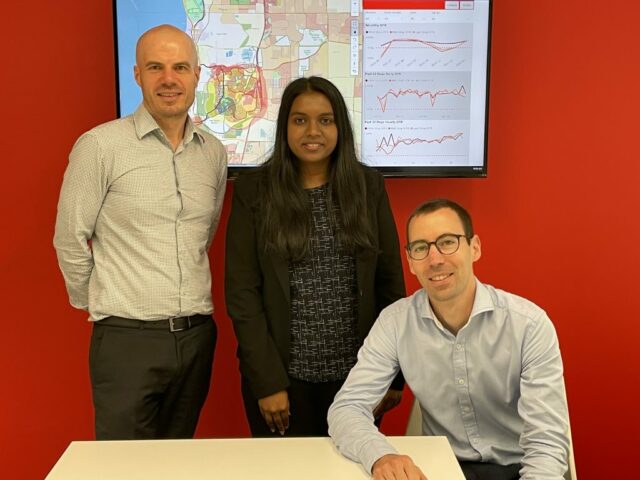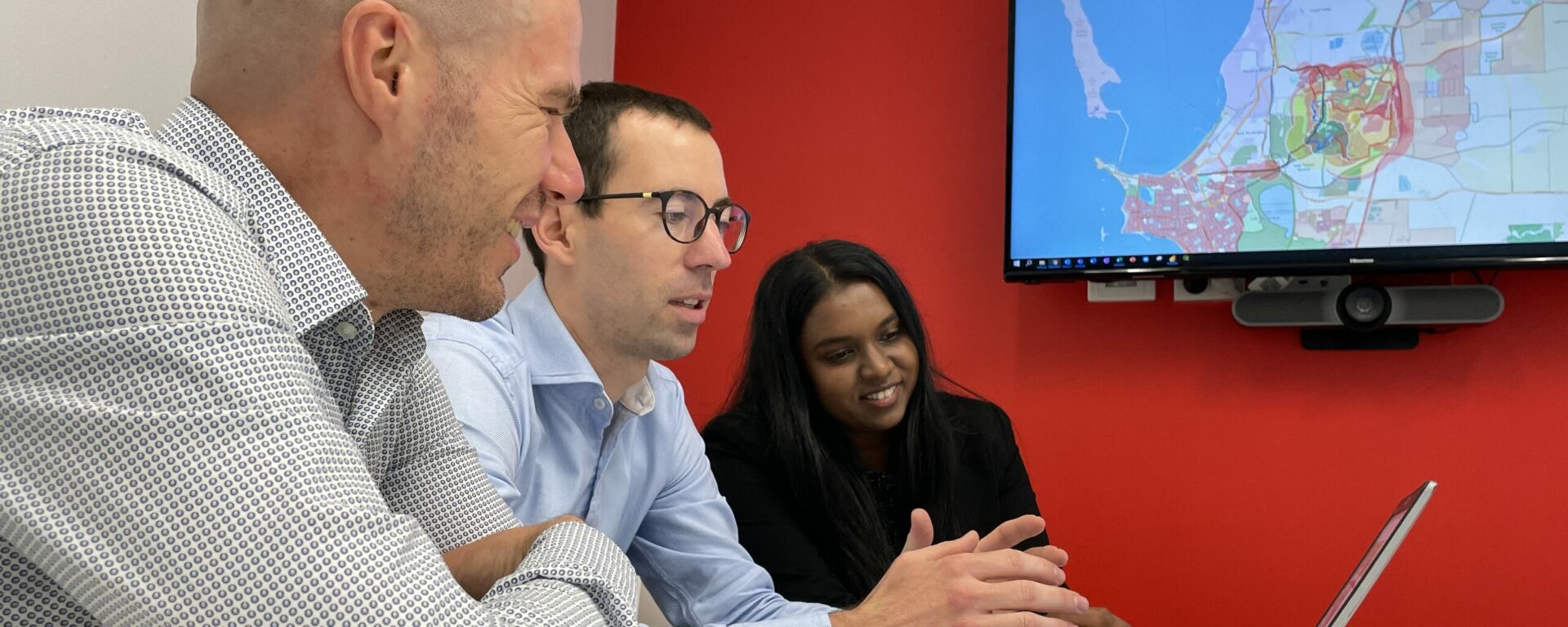Public transit customers across Australia and New Zealand are used to planning their trip online, but who are the people behind the scenes of our public transport networks? Who makes the decisions about timetables and helps keep our cities humming even during some of the busiest city sporting and cultural events?
Transdev Australasia’s Network Solutions Team based in Sydney is a busy one that takes charge of multi-modal timetable planning for the light rail, bus and ferry networks.
They are fast thinking problem solvers who are always being challenged to think of new solutions.

Pictured from left to right: Daniel, Shilpa, and Thibault
We recently caught up with Daniel Borowski, Head of Network Solutions; Thibaud Robineau, Network Performance Manager and Shilpa Singh, Senior Scheduler about their thoughts on what attracted them to the transit industry and what we can expect to see in our future public transportation networks.
Daniel, you head up one of the busiest teams at Transdev Australasia. What do you enjoy most about your role?
“I get to lead a team committed to helping people get around our cities better within a company that shares that vision. It’s a very positive job – it’s all about what we can do to help the community. It’s always interesting as we get to play with new tech and reimagine how our networks function as we develop better solutions and new ways of meeting community needs.”
Did you always see yourself working in public transportation?
“Yes, ever since I was a kid and played with trains and studied the street directory (sad but true!) It took me a while to get there, I originally did an accounting degree at university, but during that time realized that I really wanted to follow my passion for transportation and cities.”
Shilpa and Thibaud, what do you both like about working in public transit?
“It’s exciting and rewarding. I really enjoy being actively involved in community engagement. For example, working with local schools and customers to raise awareness about rail safety, diversity and inclusion. It’s a great opportunity to spend time on the network and help people from all different walks of life,” states Shilpa.
Thibaud continues, “I’ve always been fascinated by the impact of active and public transports on city shaping. It’s an industry that has a positive impact on people’s lives. But I would have never entered this industry without the technology revolution it is going through – data analysis (machine learning, AI), fleet electrification and autonomous driving just to name a few.”
As COVID continues impacting industry sectors, including transport, what do you see as the biggest opportunities for public transit?
Daniel explains, “Long gone are the days of timetables that are static for years, COVID has helped us move to a model of responsive network planning and service scheduling to keep our staff and customers safe while providing a useful service. Transportation bodies are recognizing that travel patterns are changing. As an example, we’re seeing more people work from home rather than their city offices meaning local off-peak services are becoming more important.”
Shilpa continues, “To take a lead on sustainable transportation and environmental initiatives. Social distancing also required regulating passenger density in trams, buses and trains with the ability for this information to be reflected on apps (real-time), so customers can plan their travel better.”
What are some future trends in public transit that customers can expect in the coming years?
Daniel says, “Technology is changing the conventional view of public transportation and it’s so exciting. MaaS (Mobility as a Service) is one example; a multi-modal vision of subscription-based transportation across all modes including the car.”
Shilpa continues, “Shifting towards more equitable transportation by relying on data that includes underserved populations.”
Thibaud states, “We need to ask how do we move away from mode planning and towards addressing the full customer journey? How do we balance necessary efficiencies and coverage while providing a service that is attractive in comparison to private transportation?”
Tell us about one of your favorite public transportation journeys?
Daniel says, “Leaving the car at home on the weekend and doing my errands and socializing on public transit – the bus to the city for lunch and a ferry ride to Manly. It’s a mini-holiday and it’s totally stress free.”
Thibaud states, “Any journey with my daughters – seeing how it makes sense from their eyes to take a bus, a light rail, a train, a bus, anything rather than our private car: exciting vehicles, no need to strips oneself in a bulky seat and no stressed driving parent!”
Daniel says in many ways the team’s journey is just beginning, “We’re only at the beginning of understanding how to use all the data we have, there is so much we can do to run a smarter and more relevant service with data insights.
Our cities are changing for many reasons; new travel patterns, low emission vehicles, rise of rideshare services and the ubiquitous nature of the internet mean that the future has never been more exciting for public transportation.”

